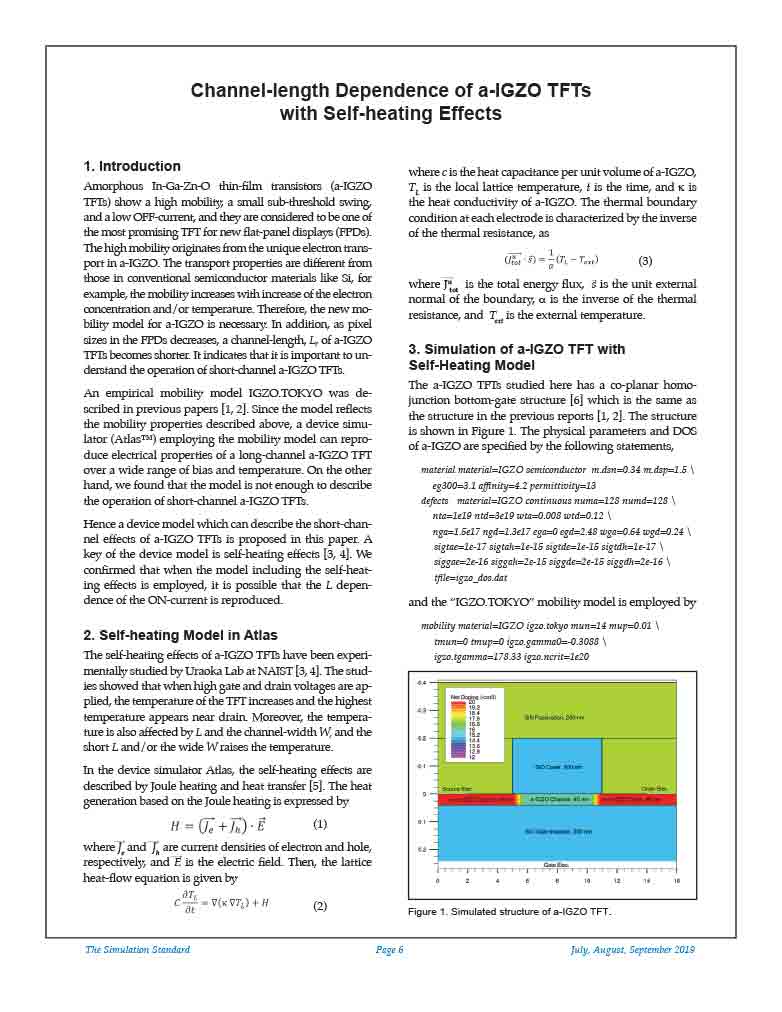Channel-length Dependence of a-IGZO TFTs with Self-heating Effects
Introduction
Amorphous In-Ga-Zn-O thin-film transistors (a-IGZO TFTs) show a high mobility, a small sub-threshold swing, and a low OFF-current, and they are considered to be one of the most promising TFT for new flat-panel displays (FPDs). The high mobility originates from the unique electron transport in a-IGZO. The transport properties are different from those in conventional semiconductor materials like Si, for example, the mobility increases with increase of the electron concentration and/or temperature. Therefore, the new mobility model for a-IGZO is necessary. In addition, as pixel sizes in the FPDs decreases, a channel-length, L, of a-IGZO TFTs becomes shorter. It indicates that it is important to understand the operation of short-channel a-IGZO TFTs.
An empirical mobility model IGZO.TOKYO was described in previous papers [1, 2]. Since the model reflects the mobility properties described above, a device simulator (Atlas™) employing the mobility model can reproduce electrical properties of a long-channel a-IGZO TFT over a wide range of bias and temperature. On the other hand, we found that the model is not enough to describe the operation of short-channel a-IGZO TFTs.
Hence a device model which can describe the short-channel effects of a-IGZO TFTs is proposed in this paper. A key of the device model is self-heating effects [3, 4]. We confirmed that when the model including the self-heating effects is employed, it is possible that the L dependence of the ON-current is reproduced.



